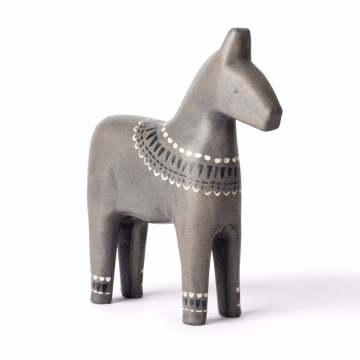Doncaster Butterscotch
Introduction to Bamboo Forests in Japan
Bamboo forests in Japan embody a rich cultural and ecological significance, making them one of the country's most celebrated natural wonders. These lush environments, characterized by towering bamboo stalks swaying gently in the breeze, have long played a pivotal role in Japanese life, art, and architecture. Historically, bamboo has been revered not only for its aesthetic appeal but also for its versatility. It has been used in traditional crafts, from woven furniture to delicate tea utensils, showcasing the deep-rooted connection between the material and the cultural heritage of Japan.
The historical context of bamboo in Japanese society is profound. It has often symbolized strength, resilience, and flexibility, qualities that are admired in both nature and character. These attributes are celebrated in classical Japanese literature and poetry, where bamboo frequently serves as a metaphor for the human condition. Moreover, the use of bamboo in construction and design reflects its practical benefits; it is lightweight, strong, and sustainable, aligning with the Japanese philosophy of living in harmony with nature.
In contemporary times, bamboo forests have transcended their utilitarian origins to become popular tourist destinations, attracting visitors from around the globe. Locations such as the Arashiyama Bamboo Grove near Kyoto exemplify this trend, offering breathtaking views and a serene atmosphere that draws people seeking tranquility amidst nature. Additionally, the ecological importance of these forests cannot be understated. Bamboo ecosystems provide essential habitats for various species, contribute to carbon sequestration, and help maintain biodiversity in the regions they inhabit. As such, these forests serve as vital ecological buffers while showcasing the natural beauty that remains integral to Japan's identity.
Top Bamboo Forests to Visit
Japan is renowned for its picturesque bamboo forests, each offering a unique experience for visitors. Among the most notable is the Arashiyama Bamboo Grove in Kyoto. This enchanting grove draws travelers from around the globe with its towering bamboo stalks that sway gently in the breeze, creating a serene atmosphere perfect for leisurely strolls. The best time to visit is during the early morning when the light filters through the bamboo, casting beautiful shadows. Surrounding attractions, such as the Iwatayama Monkey Park and the iconic Tenryu-ji Temple, make it an ideal spot for a full day of exploration.
Another must-see location is the Sagano Bamboo Forest, also situated near Arashiyama. This forest is notable for its vast pathways that are flanked by dense bamboo thickets. Visitors can enjoy a peaceful walk while listening to the calming sound of the bamboo leaves rustling. The Sagano Romantic Train, which offers stunning views of the Hozu River, is a convenient mode of transportation to access the forest. To experience the glory of this bamboo paradise, aim to visit during the warmer months, typically between April and October, when the weather is favorable.
Lastly, the Takachiho Bamboo Grove in Miyazaki Prefecture presents a more hidden gem, offering visitors a less crowded alternative to the more famous locales. Known for its unique wooden bridges that traverse serene streams, this forest allows for an immersive nature experience. The best times to visit Takachiho are during autumn, when the surrounding leaves change colors, providing a stunning contrast to the vibrant green bamboo. Nearby attractions such as the Takachiho Gorge and the famous Amano Iwato Shrine encourage visitors to explore the rich culture and natural beauty of this region.
Experiencing the Bamboo Forests: Activities and Tips
Visiting Japan’s enchanting bamboo forests provides a wealth of activities that cater to various interests and preferences. Foremost among these is the opportunity for leisurely walks or extensive hikes through the towering stalks of bamboo. Trails in renowned areas such as Arashiyama Bamboo Grove in Kyoto offer well-maintained paths that allow visitors to immerse themselves in the serene environment and appreciate the diffused sunlight filtering through the leaves. The gentle rustling of the bamboo creates a unique auditory experience, making it ideal for those seeking tranquility.
Photography is another popular endeavor within these forests. The interplay of light and shadow, along with the picturesque surroundings, offers captivating subjects for both amateur and professional photographers. Visitors are encouraged to capture the essence of the forest during different times of the day; early morning is particularly magical as the soft light casts gentle glows on the bamboo, while late afternoon can provide dramatic contrasts as the sun sets. It is advisable to bring a zoom lens to capture intricate details of the bamboo and wildlife that may inhabit the area.
For those seeking a more guided experience, many local companies offer tours that include knowledgeable guides who share insightful information about the bamboo’s cultural significance and ecological importance. These tours often incorporate stops at nearby attractions, enriching the overall experience. When planning a visit, it is crucial to consider the weather, as wet conditions can make trails slippery. Comfortable walking shoes and layered clothing are recommended to accommodate temperature fluctuations.
Additionally, there are various local eateries and shops near these attractions that allow visitors to sample regional cuisine or purchase unique bamboo crafts. Engaging with local businesses can enhance your visit, providing a deeper connection to the culture surrounding these beautiful forests.
Conservation and Sustainability of Bamboo Forests
Japan's bamboo forests are not only a significant part of the country’s cultural heritage but also play a vital role in its ecosystems. However, these lush landscapes face several threats that jeopardize their health and sustainability. Urbanization, deforestation, and climate change pose significant challenges, as bamboo forests are often cleared for development or diminished by changing weather patterns. To combat these issues, various conservation initiatives have been implemented to preserve these unique environments.
One of the notable efforts includes the establishment of protected areas that prioritize the conservation of bamboo ecosystems. These designated zones not only safeguard the biodiversity inherent in bamboo forests but also help maintain the ecological balance necessary for wildlife habitat. Furthermore, government organizations and non-profits actively engage in reforestation projects aimed at restoring areas that have been degraded. Such initiatives often involve local communities, whose knowledge and connection to the land play a crucial role in sustainable forest management.
The involvement of local communities is dynamic and essential for promoting long-term sustainability. Through education and outreach programs, community members are encouraged to take part in conservation efforts, thus strengthening their bond with the bamboo forests. Additionally, locals often serve as guides for ecotourism, sharing their cultural knowledge and traditional practices related to bamboo use in sustainable crafts, food, and architecture. This integration of conservation with local livelihoods creates a powerful model for protecting these forests while providing economic benefits to the community.
Sustainable tourism practices further contribute to this mission, as they emphasize respectful visitation and minimal environmental impact. Tourists are encouraged to enjoy the beauty of bamboo forests responsibly, ensuring that these natural wonders remain intact for future generations. By promoting both conservation and sustainable tourism, we can ensure the continued allure and health of Japan's bamboo forests.








